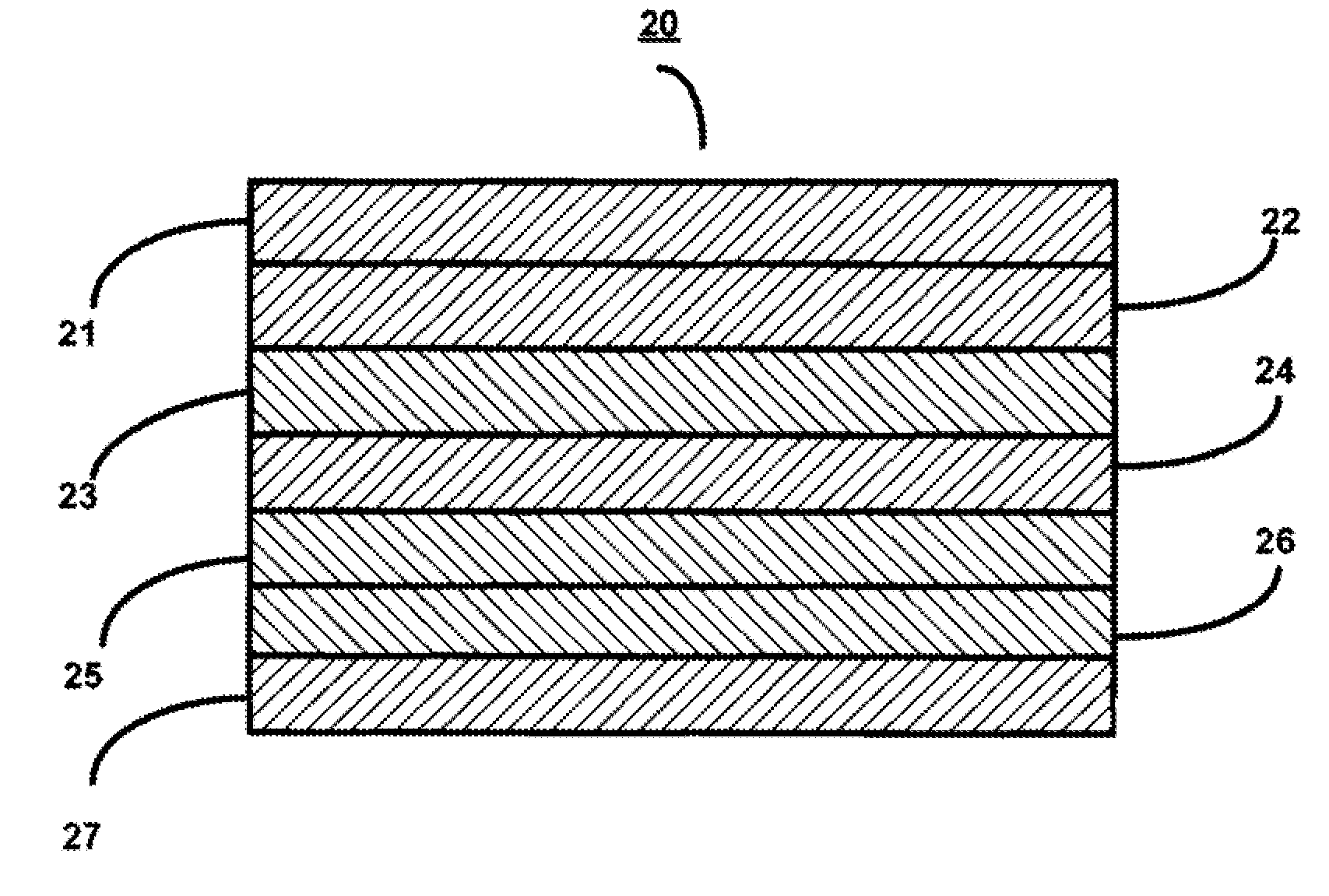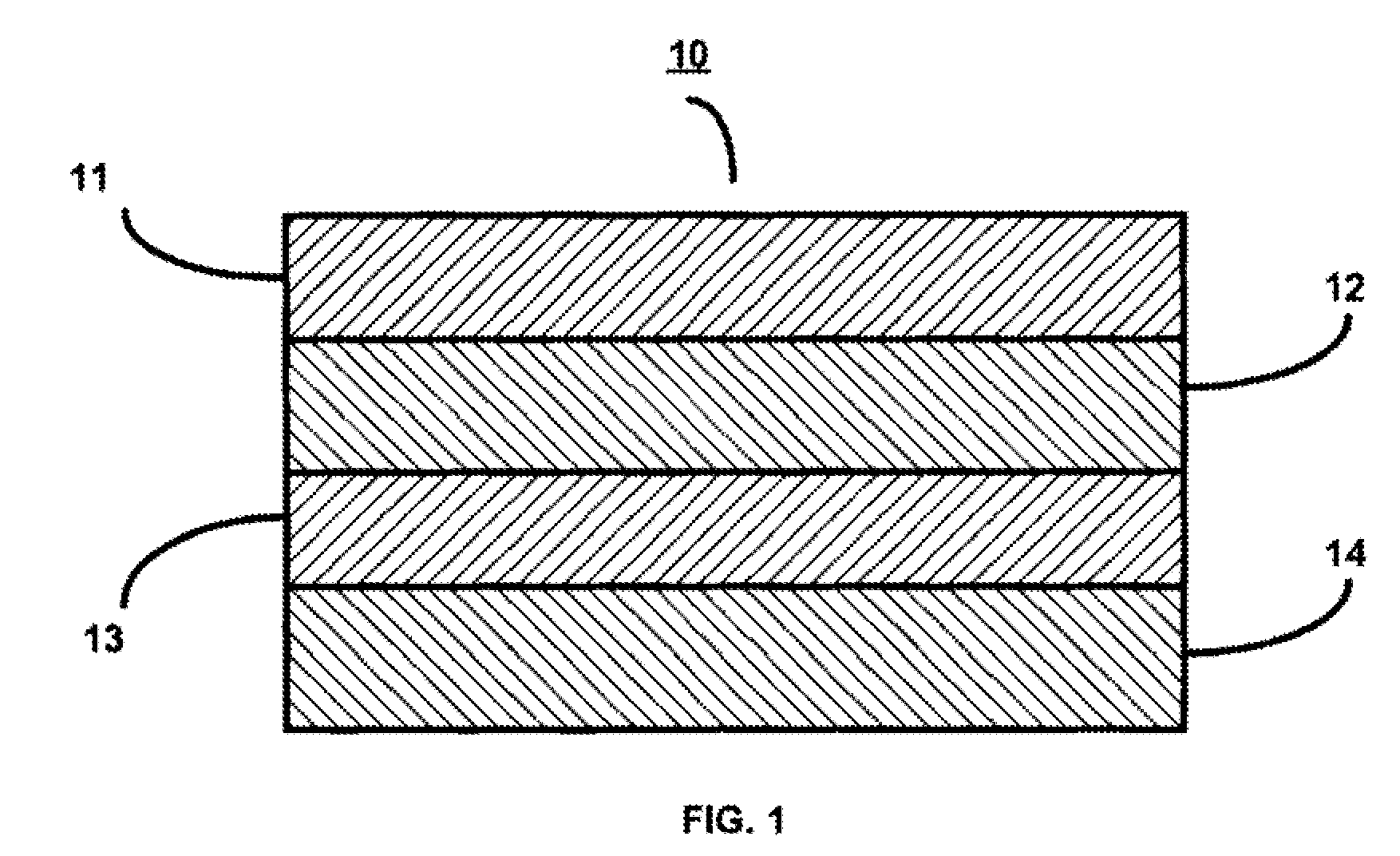Breathable Packaging Film Having Enhanced Thermoformability
a technology of packaging film and thermoformability, which is applied in the field of food packaging film, to achieve the effect of improving thermoformability and exceptional optical properties
- Summary
- Abstract
- Description
- Claims
- Application Information
AI Technical Summary
Benefits of technology
Problems solved by technology
Method used
Image
Examples
examples
[0052]The invention is illustrated by the following examples, which are provided for the purpose of representation, and are not to be construed as limiting the scope of the invention.
[0053]Unless otherwise noted, the thermoplastic resins utilized in the present invention are generally commercially available in pellet form and, as generally recognized in the art, may be melt blended or mechanically mixed by well-known methods using commercially available equipment including tumblers, mixers or blenders. Also, if desired, well known additives such as processing aids, slip agents, anti-blocking agents and pigments, and mixtures thereof may be incorporated into the film, by blending prior to extrusion. The resins and any additives are introduced to an extruder where the resins are melt plastified by heating and then transferred to an extrusion (or coextrusion) die for formation into a tube. Extruder and die temperatures will generally depend upon the particular resin or resin containing...
experiment 1
Thermoforming Experiment 1
[0061]In Experiment 1, thermoforming experiments were performed using the single-cavity thermoformer and samples of Film 1 according to the present invention and a film comprising biaxially oriented polypropylene (BOPP), ExxonMobil Bicor® 75 SLP OPP film. Each film specimen was placed onto the thermoformer and the thermocouple temperature used to estimate the film temperature, heating time and observations were recorded. Table 1 illustrates the results obtained.
TABLE 1Percent of availableTemperatureHeating Timefilm area thermoformed(° F.)(sec.)Film 1BOPP2202.5100%2205.0100%2207.5100%22010.0100%2352.5100%2355.0100%2357.5100%23510.0100%2602.5100%2605.0100%2607.5100%26010.0100%2752.5100%2755.0100%2757.5100%27510.0100%3152.5100%10%3155.0100%10%3157.5100%10%31510.0100%10%
[0062]As shown in Table 1, 100% of the available film area of Film 1 conformed to the shape of the die cavity at each temperature setting and heating time. In contrast, less than 10% of the avai...
experiment 2
Thermoforming Experiment 2
[0063]In Experiment 2, thermoforming experiments were performed using a Hydro-Trim Labform II-B thermoformer and samples of Film 1 according to the present invention and a film comprising biaxially oriented polypropylene (BOPP), ExxonMobil Bicor® 75 SLP OPP film. Each film specimen was placed onto the thermoformer and the infrared source temperature, heating time and observations were recorded. Table 2 illustrates the results obtained.
TABLE 2Percent of availableTemperatureHeating Timefilm area thermoformed(° F.)(sec.)Film 1BOPP3003.0—3004.0—3005.0—3006.0—4006.05006.0100%5007.0100%6007.0100%6008.0100%6257.0100%6507.0100% 0%(melt-through)7007.0100% 0%(melt-through)7008.0100% 0%(melt-through)
[0064]Film 1 of the present invention fully formed into the die shape beginning at 500° F. and 6.0 sec. heating time and continued to form until the temperature and heating temperature reached 700° F. and 8.0 seconds, respectively. In contrast, the biaxially oriented polyp...
PUM
| Property | Measurement | Unit |
|---|---|---|
| linear thermal shrinkage | aaaaa | aaaaa |
| linear thermal shrinkage | aaaaa | aaaaa |
| linear thermal shrinkage | aaaaa | aaaaa |
Abstract
Description
Claims
Application Information
 Login to View More
Login to View More - R&D
- Intellectual Property
- Life Sciences
- Materials
- Tech Scout
- Unparalleled Data Quality
- Higher Quality Content
- 60% Fewer Hallucinations
Browse by: Latest US Patents, China's latest patents, Technical Efficacy Thesaurus, Application Domain, Technology Topic, Popular Technical Reports.
© 2025 PatSnap. All rights reserved.Legal|Privacy policy|Modern Slavery Act Transparency Statement|Sitemap|About US| Contact US: help@patsnap.com



